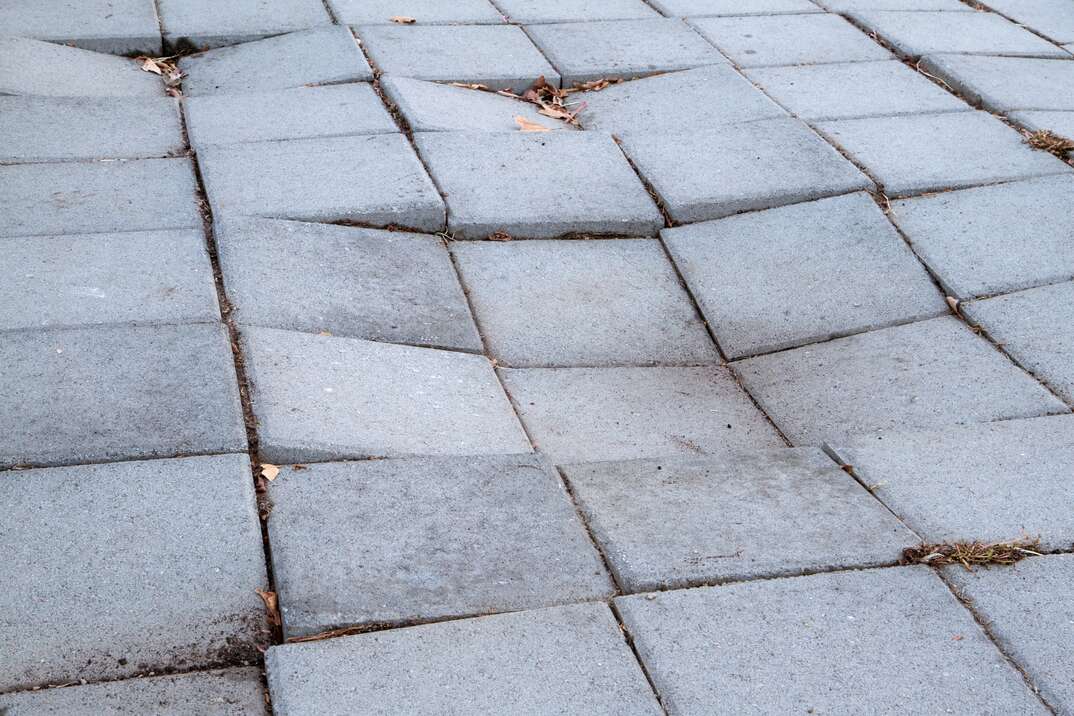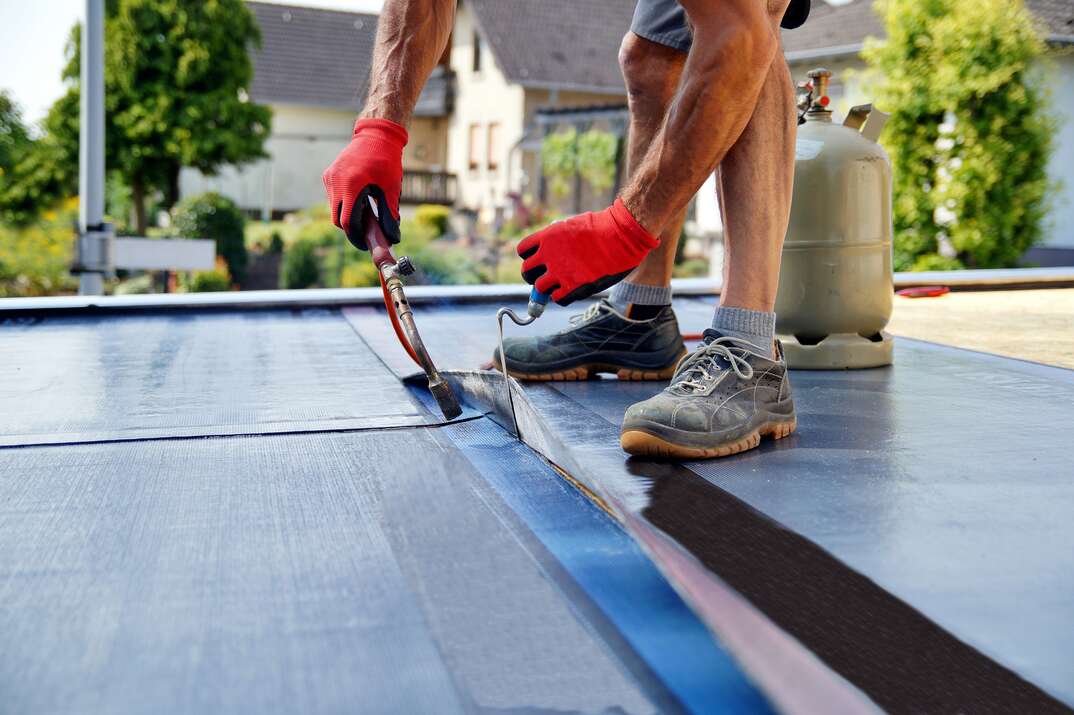Let This Sink In: Save Your Sinking Patio With This Step-by-Step Guide

Leveling a Sunken Patio at a Glance
- Step 1: Remove pavers
- Step 2: Inspect area
- Step 3: Fill gap with gravel
- Step 4: Reinstall pavers
Your patio is a place where you can relax outside and entertain your friends and family. It may be where you choose to set up an outdoor kitchen, or perhaps it’s home to plants and exterior decorations. A sunken patio can be an eyesore you’re forced to look at it every time you step outside. It’s also a hazard to yourself and others because the uneven surface presents a tripping hazard.
This May Also Interest You: How Much Does It Cost to Install a Patio?
Knowing how to level a concrete patio might save you some money and time over replacing it outright. Before you make any decisions on how to address the issue, you should understand what is causing your patio to sink so that your repairs aren’t in vain.
Why Is My Patio Sinking?
To create your patio, a concrete slab was poured to form a foundation. Most homes will experience some level of settling after construction because the weight of the foundation causes the earth to shift beneath the weight. A patio is no different in this regard, and if the concrete has settled, it might cause the foundation to sink.
Most of the time, minor settling isn’t an issue to be concerned about, but sometimes, your patio will continue to sink until its structural integrity becomes damaged. This comes out looking like there are sagging patches on the surface, almost as if there’s a hole in the ground beneath your pavers. Some of the primary causes for this include:
Eroded Soil and Foundations
Your underlayment might be disturbed over time due to unfavorable weather conditions. The water that seeps beneath the surface of the soil may be washing away the gravel and joint sand that makes up the underlayment under your foundation. When this occurs, it softens the foundation and causes it to sink. Sometimes, a single deluge of rain can saturate the ground enough to damage your foundation.
Poor Planning
Your patio may be sinking because of the original construction. When the concrete was poured, those in charge of the project may have failed to make sure the base was stable. Maybe they didn’t use paver sand or didn’t account for the natural shifting of the soil.
Tree Root Invasion
You may be unaware that tree roots have penetrated the patio’s foundation. They can push the soil around when they grow and cause the soil to sink when they die. If you’ve got trees or shrubs growing close to your patio, they may be what is causing it to sink. You need to consider whether it would be beneficial to transplant your shrubs to a different location or remove the tree that poses a hazard to your foundation. If the roots are causing your patio to sink, they could be a threat to your home’s foundation as well.
Natural Disasters
Depending on where you live, some of the contributing factors might be completely out of your control. An earthquake can shift the ground and damage your patio’s foundation, while hurricanes bring with them unexpected amounts of rain and wind.
Why It’s Important to Repair Your Concrete Patio
Aside from the poor aesthetics of having a sunken patio, it presents a safety hazard. It could injure you if you trip or slip on the pavers because they are uneven. This becomes a legal concern if someone else is injured on your property. As a responsible homeowner, you want to take steps to keep your family and guests safe.
How Do You Level a Sunken Patio?
If the damage to your patio is minor — and your patio is made of individual pavers instead of a poured concrete slab — you may be able to repair it yourself. Here's how to level a sinking paver patio:
Step 1: Pull the Pavers
The first step is to remove the stones or brick pavers that have sunk into the foundation. It is a good idea to remove the surrounding stones or bricks as well. You can do this easily with a flat-edged tool.
Step 2: Inspect the Ground
You might need to dig a little bit before you find the exact cause of the problem. Digging beneath the base should help you determine if tree roots are growing under your patio or if the ground has shifted significantly.
Step 3: Fill in the Gap
Using gravel will provide a solid base while helping remove moisture beneath the surface.
Step 4: Reinstall Stones or Pavers
Once you’ve filled in the gap, you can put the pavers or stones back in place. There will be spaces between them that you should fill in with pavers and sand. The best way to distribute the sand and ensure all of the gaps are filled is with a broom, sweeping the sand over the surface to fill it in.
This fix may solve your problem. If you have a concrete slab that continues to settle, you may need to consider repouring the foundation. If ground settling or poor water drainage is the cause of your concrete patio sinking, you’ll want to check on your home’s foundation as well.
More Related Articles:
- How to Build a Patio: 9 Steps to a Backyard Paradise
- Bifold and Your Billfold: How Much Does It Cost to Install Bifold Patio Doors?
- How Much Does a Patio Heater Cost to Rent or Buy?
- Electric Vs. Gas Heaters: Which Kind is Best for Your Patio?
- How to Install a Screened-in Porch
How Do You Raise a Sinking Patio?
If you continue to have problems with your patio, you may consider methods such as mud jacking or using polyurethane. Mud jacking works by creating grout out of limestone and then pouring the mixture into the gaps. However, since this material is heavy, it could actually cause your patio to sink even further.
Using polyurethane foam is an alternative because it’s a lighter material that can easily conform to the space it occupies. It’s very strong for its weight, but it isn’t as sturdy as limestone or gravel. Don’t be discouraged if neither of these methods works; it’s quite possible that the only solution is going to be to remove the patio and start from scratch. When the foundation is destroyed beyond repair, it’s difficult for your patio to support anything on top of it.
Why Does My Patio Keep Sinking?
Poor water drainage, tree roots, natural disasters and bad weather conditions can be working against you. Your foundation may not have been laid properly, either. If this is the case, the only option is to repair the patio’s foundation by removing it and installing a stabler one that has the proper construction and support.



